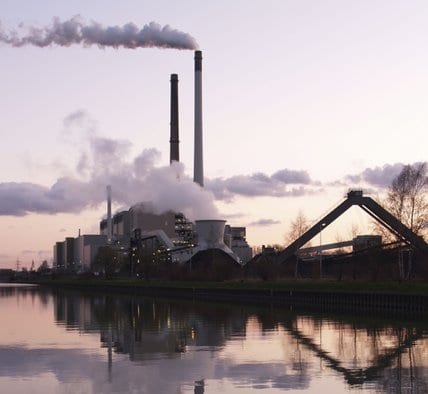North America’s carbon markets have raised over $500 million for clean energy projects and successfully completed the first linked international auction in the past month, highlighting the potential for expansion and international system linkages to fight climate change.
California’s cap-and-trade market held its first joint auction with Quebec’s system, raising $407 million and demonstrating carbon pricing works across international borders, while the Northeast United States’ Regional Greenhouse Gas Initiative (RGGI) generated $94 million in its 26th auction.
Three trends are apparent: First, these cap-and-trade systems continue gaining strength in carbon pricing and demand. Second, North American carbon markets could engage new states and provinces in 2015. Third, these carbon markets show pricing pollution and dedicating revenue to clean energy creates economic growth – a key argument for the U.S. Environmental Protection Agency’s “Clean Power Plan.”
California Keeps Crushing It On Carbon Market Success
The first California-Quebec joint auction, held November 25th, capped off an incredible year of clean energy progress for the Golden State. All 23.1 million available carbon allowances for 2014 sold out at $12.10 per ton, and the auction also sold out of all available 2017 future allowances for $11.86 per ton.
Auction demand and prices show the system gaining strength faster than a bodybuilder at Venice Beach. Current and future clearing prices for allowances increased from California’s previous auction ($11.50/ton for 2014, $11.34/ton for 2017), and cumulative proceeds from all 2014 auctions now stands at $1.2 billion.
Add 2014’s total to the $1.4 billion generated in 2013 and nearly $3 billion has been invested in clean energy, emissions reductions, consumer utility bill relief, and government operations in two years – just by pricing pollution! And cleaning the air is also greening wallets: California is the epicenter of America’s clean tech economy and home to 430,000 green jobs.
November’s auction also demonstrated international carbon markets can successfully link to cut emissions and fund clean energy over a wider area. California and Quebec officially linked systems on January 1, 2014 and Quebec held four successful auctions on its own, but the first joint auction was previously postponed due to technical difficulties.
Demonstrating international market linkages is important precedent, considering the World Bank reports 39 national and 23 regional carbon markets are either in place or scheduled to launch soon, and China has pledged to develop its national carbon market in coordination with California.
RGGI Flexibility Bodes Well For EPA Emissions Cuts
But let’s not forget RGGI. The system’s final 2014 auction set a new record high for carbon prices within its borders by selling out all 18.2 million available allowances at $5.21/ton, generating $94 million for clean energy, energy efficiency, and pollution reduction. RGGI has now cumulatively raised $1.9 billion, outpacing initial projections of $2 billion by 2020, while the regional economy has grown 7%.
Even though it generated a quarter of the revenue raised by California and Quebec, RGGI’s most recent auction is arguably more significant for a different reason – rising prices in RGGI show how carbon markets can adjust over time to changing economic or energy trends while remaining relevant.
“After 26 successful auctions, RGGI states have demonstrated it is possible to effectively achieve pollution reduction goals while maintaining grid reliability and affordability for consumers,” said Commissioner Kelly Speakes-Backman of the Maryland Public Service Commission.
Carbon allowances have sold for around $2/ton throughout most of RGGI’s six-year auction history. Emissions fell faster than expected (40% since 2005) due to America’s economic slowdown (thus less power demand), increased energy efficiency, and more renewable and natural gas generation. This all added up to less demand and lower prices for carbon allocations.
But in 2013, RGGI reduced the 2014 carbon budget (the “cap” in cap-and-trade), retired unsold 2012 and 2013 allowances, and increased its emission reduction goal to 50% by 2020. And it’s worked – allowance prices rose to around $3/ton through 2013, and have been between $4-$5/ton through 2014.
Here’s why RGGI’s success is important: EPA’s proposed plan to cut U.S. power plant pollution endorses regional market-based systems as a cost-effective way to achieve a 30% national emissions reduction by 2030. “Our RGGI experience demonstrates cost-effective approaches to implementing EPA’s proposed Clean Power Plan are available and if correctly designed can support state economies,” said Commissioner Rob Klee of the Connecticut Department of Energy and Environmental Protection.
Will North American Carbon Markets Spread Regionally?
Naturally, generating billions for economic growth while cutting pollution has proved attractive to other North American governments. Quebec has discussed integrating RGGI states with its system and linking to other Canadian provinces to create an Eastern regional market while California is already working with Oregon, Washington State, and British Columbia on a Western regional climate plan.
Pulling other states into existing carbon markets sounds far off, but several states could realistically move toward integration in 2015. A Washington State cap-and-trade proposal should occur this year, while studies have shown an Oregon carbon tax would raise billions without harming the state’s economy, and Governor-elect Tom Wolf has promised Pennsylvania will join RGGI – nearly doubling the system’s footprint. Climate hawks are also pushing for New Jersey to rejoin RGGI after Governor Chris Christie withdrew the state in 2011.
In a recent editorial, the heads of all four West Coast governments wrote their joint approach “shows it is possible to take serious action on climate and simultaneously grow an economy.” Climate analysts have also predicted EPA’s Clean Power Plan means RGGI membership is now in the future for Pennsylvania and New Jersey.
Bottom line, carbon markets work – by one account they cut emissions 17 times cheaper than subsidies alone. And with every dollar raised by pricing emissions, we get one step closer to our clean energy future.
Source: CleanTechnica. Reproduced with permission.













